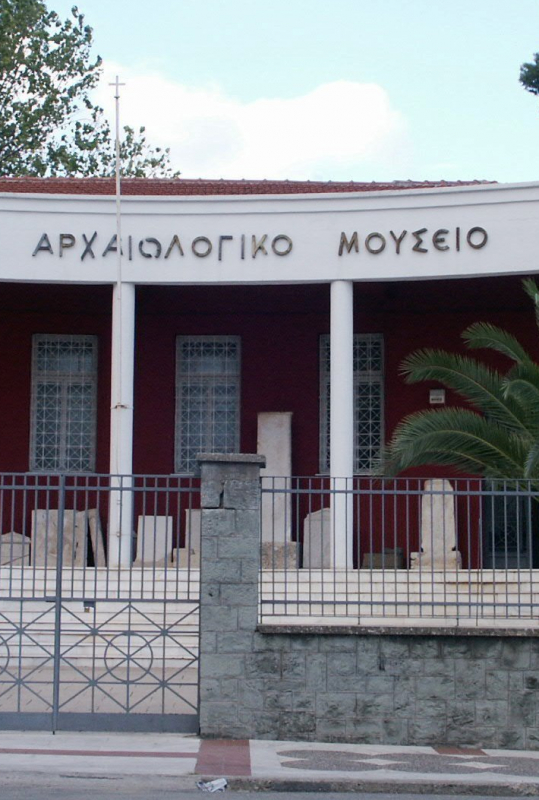The Archaeological Museum of Agrinion was inaugurated in 1969. The Papastratos family donated the building. The comprehensive collection includes artifacts from the prehistoric period all the way to Roman times from areas around Agrinio. The head of Meleager from the heroon (a shrine dedicated to a hero) at Calydon is among the most notable artifacts here. It is a marble copy of a bronze statue associated with the famous sculptor Skopas of Paros. The original was very popular during Roman times, so there are numerous extant copies (13 statues, 4 torsos, 19 heads) in museums around the world. The museum of Agrinion also houses a remarkable marble door from a Macedonian tomb found in Calydon.

6. Archaeological Museum of Agrinio
The ancient history of Agrinio is relatively short but it packs a punch with heroes hunting their cousins, uncles, or wild boards and hapless civilians being massacred on their way to safety.
Stories
A very popular man
Family feud
Agrinion was founded by Agrius, a son of Porthaon, king of Calydon in Aetolia. His was not a particularly loving family. His brother, Oeneus (“wine man”) succeeded their father as king of Calydon but two of Agrius’ sons overthrew him and put him in jail. Then they gave the kingdom to their father. Their reign did not last very long, though, for Diomedes, Oeneus’ grandson, deposed them and put his grandfather back on the throne. Nothing more is heard about Agrius. It should be noted, here, that Diomedes’ father was no angel either, for he ate the brains of his enemies. As a result, he lost the favour of goddess Athena, who refused to offer him an elixir that would make him immortal.
When the elephants dance
Agrinium had the misfortune to find itself embroiled in the struggle for supremacy between the Macedonians (under Cassander) and the Aetolians. The latter were engaged in a perennial conflict with the Acarnanians, who lived on the far (western) shores of the river Achelous. In 314 BCE the Macedonians moved into Aetolia but only as a diversion, since their real target was Leucas and other cities along the Adriatic shore. Cassander made a show of force but soon departed, leaving behind a relatively small garrison entrusted with the task to assist the Acarnanians, should the Aetolians decide to move against them. And move they did, for they were determined to eliminate all enemy strongholds.
The massacre
Cassander advised the Acarnanians to abandon their scattered unfortified villages and move into larger cities, where they would be able to defend themselves in case of an attack. Some Acarnanians chose Agrinium but it proved no match for the determination of the Aetolians. Their army (3000 men) invested the city and laid siege to it. The Acarnanians resisted for a while but eventually they agreed to surrender the city and depart under safe conduct. Their trust in the truce was misplaced though, for as they were marching away, the Aetolians attacked them and killed all but a few of them. Agrinium, despite its great strategic value, never managed to become an important city in antiquity.
Powered by Clio Muse Tours